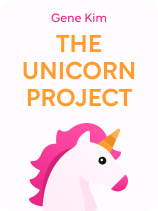

This article is an excerpt from the Shortform book guide to "The Unicorn Project" by Gene Kim. Shortform has the world's best summaries and analyses of books you should be reading.
Like this article? Sign up for a free trial here.
What are the benefits of a customer-centric approach in business? Why is it advised to keep business strategies simple and straightforward?
If you’re running a company, the customer should always be at the center of your focus. Anything other than that creates a complicated system that ultimately fails because projects grow out of control.
Continue reading for a customer-centric approach that keeps things in moderation.
Simplicity and Focus on the Customer
In The Unicorn Project, Gene Kim’s customer-centric approach can be summed up by the ancient words of wisdom, “Keep it simple, stupid.” Not only does this refer to small, tightly focused projects directed toward singular goals, but it also means always keeping an eye on the needs of the customer as a guiding star. We find that while other authors agree that simplicity is an important goal, they suggest that complexity can’t be done away with, innovation should only be applied in moderation, and that simplicity is most important as it’s perceived by a product’s end user.
In Kim’s story, the Phoenix Project went off the rails when its original purpose—to provide an online ordering system—became lost under a growing mountain of added functionality and demands for new features from other business departments. This created a nonstop growth of scope and complexity that became so untenable the project couldn’t move forward. Kim argues that part of the job of project management should be to reduce complexity and not to let projects grow out of control. While that can be true of any business project, in the world of software, Kim recommends functional programming as a means to achieve simplicity in design.
(Shortform note: Functional programming is a technique for writing software that builds computer programs out of units of code that exist independently of the data they process. Common functional programming languages include Haskell, Erlang, and Clojure. The most popular alternative to functional programming is object-oriented programming, which primarily structures software around bundles of data, characteristics, and code. Object-oriented programming languages include C++, Python, and Java.)
Kim also reminds us that any project within a business has to serve the goals of the business, which inevitably amounts to meeting the needs of the customer. This serves as a test of any new project or added software feature—will it further the business and give customers what they want? In the name of simplicity, Kim recommends that any single project shouldn’t try to accomplish too much at once. Instead, a new, simple project should be created to meet new customer demands rather than adding to and complicating an existing project.
| The Challenge of Complexity In The Mythical Man-Month, IBM’s Frederick Brooks discusses complexity in Kim’s context of software development, but with implications for any organization. The primary obstacle Brooks found was the number of people and software components that had to coordinate with each other. (In the place of software components, you can theoretically substitute any business tool or operation.) Furthermore, each new person or component multiplies a project’s complexity instead of merely adding to it. Brooks argues that complexity can’t be done away with, but it can be managed and reduced. His solutions include limiting the size and scope of teams and setting realistic expectations for the schedule regarding a project’s completion. In Kim’s story, Unicorn differs from Phoenix in that it’s a small project instead of a huge one. In Great by Choice, Jim Collins and Morten T. Hansen show that companies who successfully innovate do so in small doses, adopting a “bullets before cannonballs” approach. Before attempting a large-scale project, they experiment with a smaller version of the concept which can later be scaled up if it produces positive results. The characteristics of a good, simple test project are that it’s low-cost, low-risk, and doesn’t disrupt the company’s regular operations. Kim’s litmus test for pursuing a project is customer orientation—how will it benefit the product’s end user? In User Friendly, Cliff Kuang and Robert Fabricant explain why customer focus and simplicity of design are becoming crucial in the age of information. Hard-to-use technologies create complications on the consumer side, ranging from annoyance to maddening frustration. Since technology is so embedded in every aspect of contemporary life, tech innovations should simplify some aspect of the customer’s life and provide clear feedback as to whether the product works, which dovetails into Kim’s next principle. |

———End of Preview———
Like what you just read? Read the rest of the world's best book summary and analysis of Gene Kim's "The Unicorn Project" at Shortform.
Here's what you'll find in our full The Unicorn Project summary:
- Why the work of IT services must align with a company's goals
- How an IT department can turn itself around after failure
- The three pillars of IT management: workflow, feedback, and constant improvement






